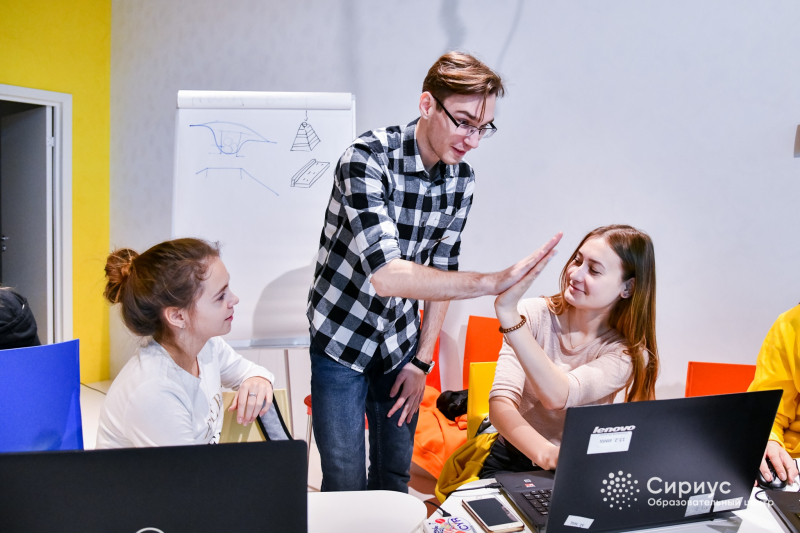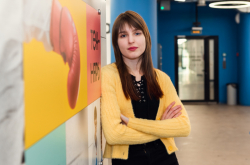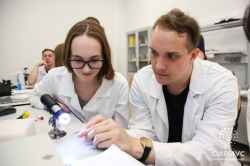It is for two years already that the Sochi-based Sirius research and education center has been hosting camps for school students interested in the augmented and virtual reality technologies. This allows the students to obtain a solid experience in programming, which could help them figure out whether they’d like to pursue this professional field in the future. Standing in as one of the program moderators this year was ITMO University Master’s student Yulia Shutova.
“This year, the organizers approached the head of ITMO’s Design and Multimedia Center Artem Smolin with a request to recommend them a specialist in this field, and this was how I got to join the team of moderators,” says Yulia. “My preparations for the eight-day camp had begun long before I came to Sirius. A month before the program started, all moderators had been allocated to thematic cases together with Rosneft experts to develop technical tasks for the teams. Each team included three moderators with different sets of skills: a Unity developer, a 3D artist and a teacher. The expert we worked with told us what would be done, and we, moderators, would write up the technologies to respond to the question of how this would be done.”
That said, Yulia and her colleagues were categorically prohibited from helping the students in any way. The moderators’ only remit was to help and explain, in other words, to have a response to any questions that students may have when solving the tasks. With that, the response should be comprehensible to a ten-to-11 grader, which is sometimes harder than to write a code on your own.
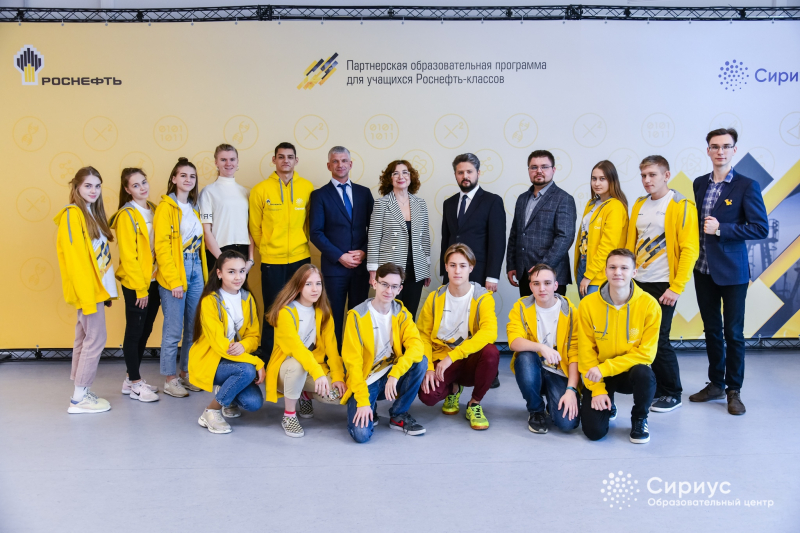
Oil derricks in VR glasses
The participants were divided into nine teams with 12 people each to solve a variety of tasks: from oil prospecting to sorting oil products onto train сarriages. Thus, the students not only trained in software development but also gained a better understanding of the mechanism of oil production, from searching for new deposits to transporting the resulting petrol.
“Our project focused on the creation of a simulator for a part of oil production plant using a VR headset,” explains Yulia. “We were making a pad for oil delivery. An equipment operator there should perform a large number of activities: open something, close something, clean something out; all of this has a very strict algorithm. If a person working on the facility makes a mistake, there could be an explosion or an oil spillage. So were tasked to develop a VR simulator for operators of this equipment.”
Other teams had to create software for oil prospecting with the help of drones, a VR training simulator for the sorters of oil products, and an AR app for chemical technologists that would identify the liquids in test tubes. To do that, the teams worked with genuine technical drawings of real-life units of oil processing, transport and chemical companies.
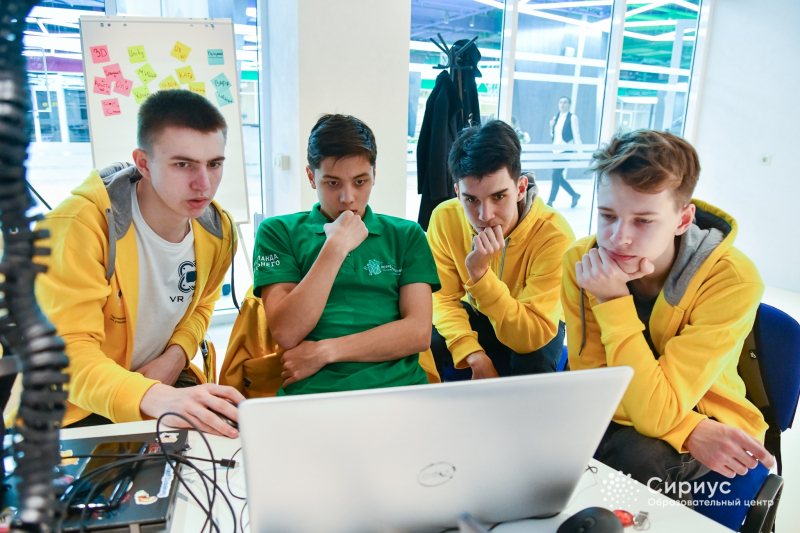
“The members of my team modeled our pad based on some gigantic technical drawings, there were 13 models and over 70,000 operating domains. They’d done some of the work in their previous visits to Sirius, but only five of the models turned out to be usable, the rest we had to start redoing from scratch. This was done by six team members, while the other four worked on programming and two developed the design of the interface, its coloring and presentation. In addition to that, and this was the most frightening prospect, they had to develop a way to display the interface on a big screen so that an expert could change something in the aggregates to put the operator in the conditions of an equipment breakdown for them to then find a solution,” shares Yulia.
People, servers and databases
To bring this idea to reality, the team had to simultaneously solve a range of rather complex tasks. Firstly, to interconnect the visual interface, server and database so that the data from each training could be transferred to a special table with comments from the overseeing expert.
“There had to be one person working on this connection between the server, Unite and database, because otherwise, the team’s minds would’ve just imploded. But this had to be someone who knows a whopping three programming languages and three different approaches to programming needed to write the server, database and interface. In our team this was done by one girl together with me, and she succeeded,” says Yulia.
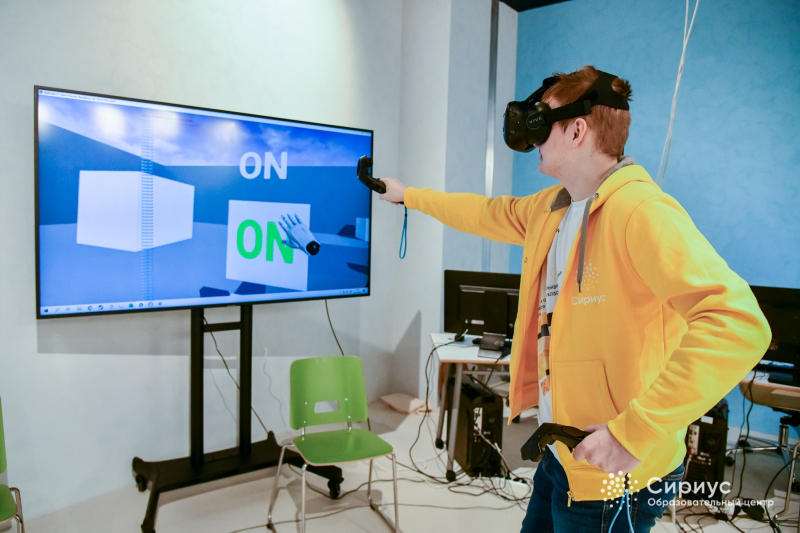
According to Yulia, when working with children she often remembered her own teachers who’d explained to her everything she now knows.
“I had a class on databases in my third year at uni, and the lecturer put a lot of time into making sure that we really understood the material and the questions discussed, and did things in the right way. This has stuck so well in my mind that I think I’ll remember it for the rest of my life. This knowledge came in really handy when working on our database when I had to explain to my student how to do it all in a matter of days. What is more, because I graduated from the program “Information Technologies in Design”, I had to oversee the design part. My ITMO background was of great help, too, because many things that were obvious for us at university turned out to be completely the opposite for my students.”
An important problem when developing any VR app is ensuring that users won’t get nauseous when wearing VR glasses.
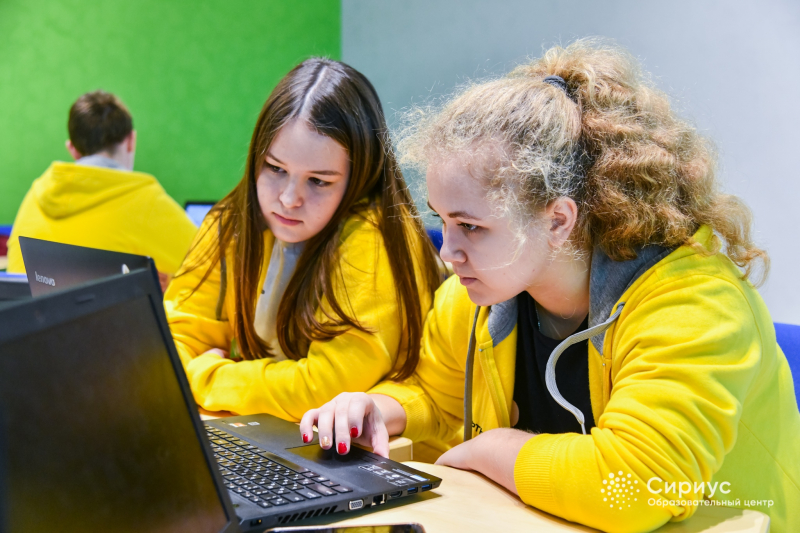
“One colleague of mine was also very concerned over this issue, all the more so because these are children that we were working with. But dealing with this problem was the central topic of my thesis, so I did everything so that everything would work in the right way and nobody would get nauseous. We decreased the load on the graphic processor for the image to update quicker and to avoid any possible delays. We worked on a clear-cut interaction within the system so that its responses to any movement would be instantaneous. What made all this work more difficult was that our software and the plugin responsible for the launch of the VR module are updated at different times, which led to inconsistencies, and the work had to be redone. Sometimes updates happen during the working process, and you understand that that’s it, the work’s gone out of the window,” shares Yulia.
To do the impossible
As a result, in one week the teams of young programmers managed to solve the tasks they’d been set and create a working prototype. It’s too early to think about their implementation into real-life processes; this requires some further work. But, says Yulia, the joint program will continue in the future, which means that the parties are pleased with the results achieved.
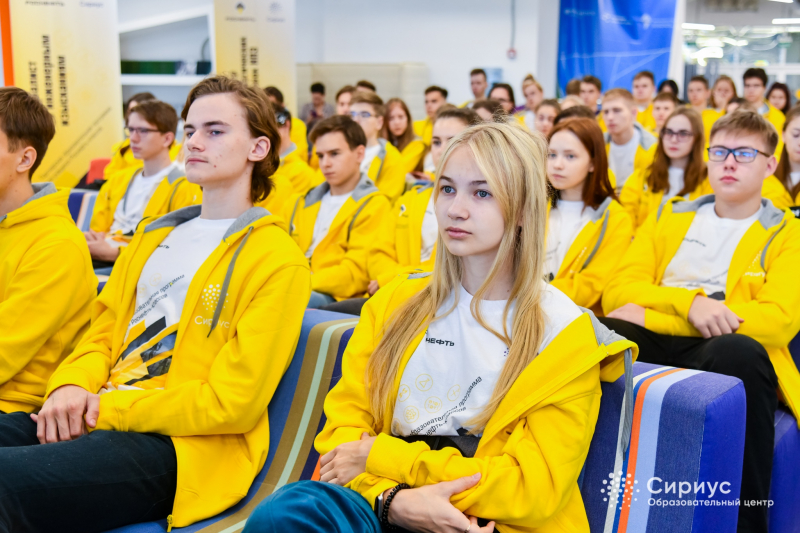
“In reality, nobody’d really ever told the students that what they would be doing was impossible to accomplish in such a short period of time,” recalls Yulia. “But when I first heard about the task, I thought that we’d never make it. But the team didn’t know that, and they worked and worked, and did it. This is the most amazing thing: you shouldn’t say that something is impossible, it’s just something that’s needed to be done. This was a huge lesson for me.”
As of today, Yulia is continuing to work on her student projects at ITMO University and cooperating with Sirius in parallel to that. Right now she is in Sochi, acting as a moderator for a camp for five-to-six grade students.
